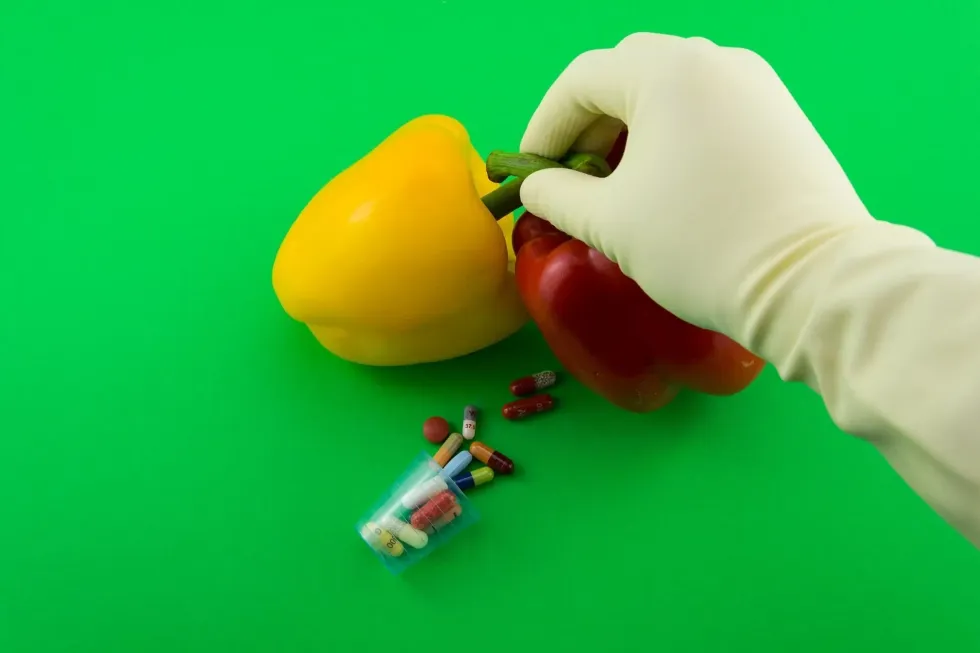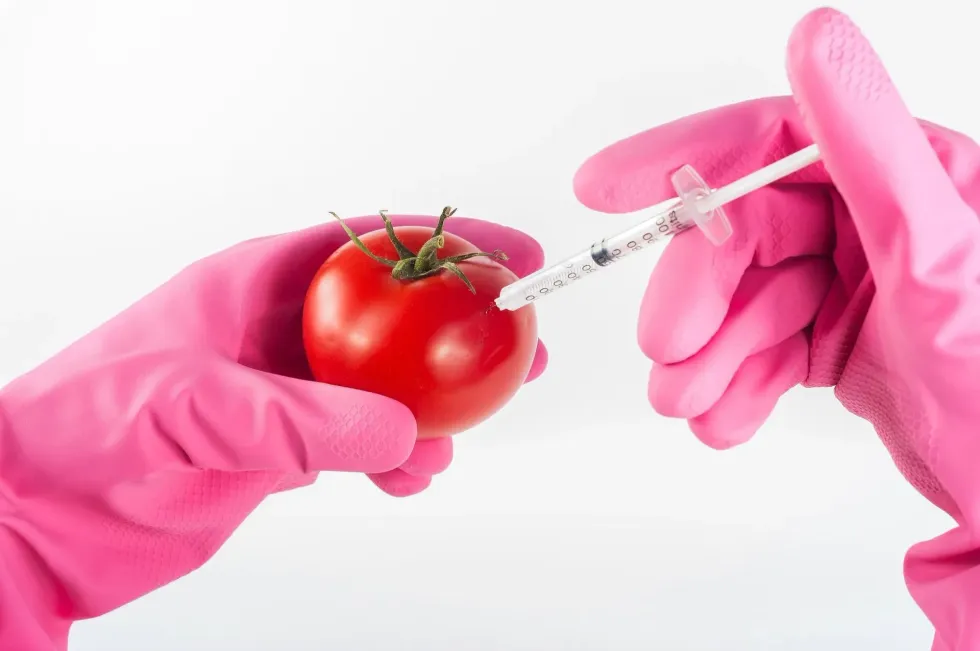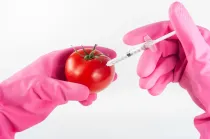Fun Food Science for Kids: Healthy Habits

There are so many colleges where food technology is taught. But have you heard of it as a subject that is being taught in school? Yes, many schools across the world are now offering food science as an independent subject to encourage curiosity amongst the students related to food science. This will lay the foundation stone for future research in this extremely dynamic field.
Herein, various experiments, activities, lessons, and materials are prepared for the students to learn! Doesn’t it sound interesting?
Basically, food science teaches you about the physical, chemical, and biological orientation of food. Other than that, how it is made, how it gets deteriorated, technological advancements in this field, and ways to improve the standards and safety of food, are some topics covered by the subject in schools. The basics are covered in food science.
The students need to know what type of food they eat and what kind of diet they should follow for a healthy lifestyle. What kind of food is to be avoided by people having various health issues?
Food science answers every concern regarding this. There are many science experiments to choose from. Science experiments do not have to include harmful ingredients, but science experiments that use edible content.
Read along to find out about more food science for kids! Afterward, also check food safety for kids and facts about food coloring.
Fun Experiments
The world of food science is filled with various interesting and challenging experiments that will certainly intrigue your curious mind? Are you looking to take on some extremely fascinating fun experiments related to different aspects of food science which will certainly encourage you to delve deeper into the intricacies of the subject?
Then there are some fun experiments that you will surely enjoy.
Food Batteries
The idea behind this experiment is to make a battery out of the food items commonly available in the kitchen, like a potato or lemon. Other things that are required for the experiments are:
- Zinc electrode
- Copper electrode
- Copper wire
- Small lightbulb
Firstly, the zinc electrode should be pushed into the potato or lemon with the copper electrode placed on the other side. Use the copper wire to connect the two electrodes with the lightbulb and see what happens!
Make sure the kids are under adult supervision while doing this activity. If you are an adult, then also make sure that you do not put yourself in harm's way.
Graham Cracker Earthquake
This experiment does not require any safety precautions and is great fun.
The intention behind this experiment is to explain the tension that builds before an earthquake. And all you need is a half-graham cracker. Break the cracker along with the perforation and keep the pieces together, so they touch each other.
Move one piece away while moving the other pieces towards the former one and ensure that the edges are touching. You will notice the tiny crumbs forming. Those crumbs represent breaking up the edges of two plates.
Now break one of the halves into two and see the difference in the edges as compared to when the first time the cracker was broken. Keep on moving the halves and see how the larger pieces break.
This response implies that this earthquake was greater than the last one. Therefore, this earthquake has more destructive potential than the last one. End the experiment by gobbling it up!
Importance
Food science as a subject has assumed considerable importance in the last few years. People across the world are now extremely concerned about the functioning of their bodies. For this reason, they have become quite particular about the food they consume.
- No one can deny the importance of good-quality food for the functioning of any living being. Here are some extremely fascinating facts related to the importance of food science for kids: -
- This subject teaches about the optimal utilization of food resources and reducing waste generation.
- This sector will never go out of trend! Reading and learning about food security and finding new ways to increase the security of food is the need of the hour.
- The upcoming generation needs to be made aware of the dangers of unhealthy food and lifestyle.
- Food science is about understanding foods that can be afforded by everybody so that they can be healthy.
- Food science is one of the most important branches of science in the present times. Climate change and various weather-related changes have made growing enough crops to feed the population a challenge. Every year, thousands of acres or hectares of crops are being destroyed due to various reasons.
- As such the importance of food science becomes greater as it helps to make the best use of the available food sources and eliminate the wastage of precious resources. As you know, most of the food materials in modern times have a biological origin.
- Thus, it becomes extremely challenging to determine the way these food products are going to behave in the wake of changing environments. It is extremely important to acquire greater awareness regarding the multiple aspects of different problems related to food science. This is the reason that a focused study into the field of food science is extremely important.

Benefits
Are you still unsure about the benefits of food science? Well, then in this section we will discuss different benefits of food science for the students. The benefits of food science are quite elaborate and will certainly make for a fun learning experience.
- Food science teaches about health and nutrition. Further research can help a person understand what kind of food he or should eat or avoid.
- Food science teaches us about modern food security and quality.
- Food science will help you understand the nutritional value of food and help us keep our health in check.
- Knowledge of various aspects of food science will allow you to formulate the best possible diet as per the requirements of your body.
- Experiments related to food science are an extremely fun way of encouraging kids to study the subject further and discover some new aspects of this rapidly evolving science.
Amazing Facts About Food Science
Are you looking for some fun and amazing facts about food science? Then here we have come up with some fun facts about food that are scientifically backed by research undertaken by experts.
Eating together with your friends or family releases endorphins, which help us bond with other people. Imagine one chemical dedicated to taking care of your stress and your social well-being.
This one is for the fans of crispy food. The crunchier a food is, the better flavor it gives. And it’s not us, science says so.
Ever eaten something on the plane and wondered why you didn't feel the taste? Well, that’s, because of the lack of humidity that affects the flavor and aroma.
Remember the restaurants you visited and how they played songs the entire time? Do you know that music isn’t only to create an ambiance but also to influence our brain to perceive the taste of the food? Yes, the chefs call it the sonic seasoning.
The food we consume every day is made up of both good and bad chemicals. The word “chemical” automatically creates an image of something scary and harmful in our minds.
Hence, many are opting for a lifestyle that’s free of such chemicals. It is obvious that the word “chemical” has been misinterpreted in more than one way.
People do not understand that the nutrients we consume carbohydrates, proteins, fats, and everything has a chemical structure. Kitchen Science is about all those chemicals that are fit for consumption.
When we cook more than one kind of ingredient, combine them together and create a dish. Such transition of the foods is done with the help of all sorts of processes like mixing or blending, heating or freezing, etc.
One easy example to understand will be the Maillard Reaction. The sugar combined with protein results in the browning of food. This event is the process that also gives out the burnt flavor.
Talking about STEM, STEM is a teaching subject consisting of science, technology, engineering, and math. The purpose of this subject is to blend learning with everyday life so that students can relate and understand better.
This curriculum begins at the elementary level so the students show interest in this course. By the time they reach high school, the students understand how rigorous and challenging the course is. STEM is taught through various experiments.
This STEM method of teaching has now reached the kitchen realm. The kitchen is a great place to learn. Everything about cooking involves experiments. The students can have hands-on experience in activities that not only teach them about health but also about science and math.
Some people say that food is the answer to everything. Those who love to cook will tell you how therapeutic it is for them. Those who love to eat will tell how satisfying it is for them. Finally a fun subject at school.
Just a little science mixed well with the ingredients, and voila! Your new dish, the new project, is finished. The best part is, that the career scope in this line is vast.
Kids who take a serious interest in this subject can even pursue a career in food science. They can become scientists and make discoveries, come up with something that can help society, or even become a dietician.
And of course, let’s not underestimate today’s generation. They are too good at proving that anyone can do anything they want, anytime they want.
The concept of creating, forming, and testing what we taste began years ago. We discover and create something new to taste with the help of test ideas and experiments. We sometimes discover a completely revolutionary food to eat during a fun experiment, sometimes we discover something that is just worth throwing away.
It is all chemistry. Combining elements to create something better with a test in chemistry. Children love to test and explore their ideas without knowing the chemistry behind them.
Today's children love Jell-O. Jell-O is a sweet gelatin dessert. This Jell-o comes in various shapes and tastes depending on how much you explore the market. Once you begin to explore, you will find that there is more than one type of Jell-o available. They come in little bins.
They have edible ingredients. Fizzy lemonade is one of its flavors. Fizzy lemonade is usually a good squeezed lemon juice. Edible, hands-on experiments are great fun for kids. To make something look appetizing, food coloring is often used.
Children love to explore new things to eat, exploring and creating a combination that they like. Making homemade butter is a classic science experiment and something that the kids will enjoy very much. Older kids indulge in interactive activities. Homemade butter is made with the help of milk.
It is important to separate the cream from the milk to stop the milk taste from taking over. When the milk is churned, the cream is separated from it. Such a simple experiment will result in fun learning for the kids.
A chemical reaction is something very much adorned by science kids. Chemical reactions can cause something very beautiful. Chemical reactions like a candy DNA model or chemical reactions like adding mentos candy to a bottle of cola create an amazing eruption that kids will find fascinating. This fun project includes a scientific method with the help of fun learning.
Another fun science activity is the dancing raisins experiment. Add one teaspoon of baking soda to a mason jar and stir it until it is completely dissolved in the water. Add multiple raisins and slowly pour in some vinegar.
The vinegar chemical reaction can make the raisins dance. They form carbon dioxide air bubbles. Baking soda can be used in many science experiments. Among very common science experiments is the baking soda volcano, which is made with the help of baking soda.
These experiments are both engaging and fun for kids. Another hands-on science experiment that will engage the kids includes the moon phases experiment. This fun experiment helps to teach kids about the different moon phases.
Here at Kidadl, we have carefully created lots of interesting family-friendly facts for everyone to enjoy! If you liked our suggestions for food science for kids that can make your kid aware and healthy, then why not take a look at food facts, or where does food come from?
We Want Your Photos!
More for You
See All
Bachelor of Commerce, Master of Business Administration specializing in Marketing

Supriya JainBachelor of Commerce, Master of Business Administration specializing in Marketing
As a skilled member of the Kidadl team, Shruti brings extensive experience and expertise in professional content writing. With a Bachelor's degree in Commerce from Punjab University and an MBA in Business Administration from IMT Nagpur, Shruti has worked in diverse roles such as sales intern, content writer, executive trainee, and business development consultant. Her exceptional writing skills cover a wide range of areas, including SOP, SEO, B2B/B2C, and academic content.
Bachelor of Arts specializing in Economics

Gowri RaoBachelor of Arts specializing in Economics
With a bachelor's degree in Economics from Krea University, Gowri is a highly skilled data analyst and an expert in regression and causation modeling. Her interests in economic trends, finance, and investment research complement her professional expertise. In addition to her professional pursuits, Gowri enjoys swimming, running, and playing the drums, and she is also a talented tutor.
Disclaimer
1) Kidadl is independent and to make our service free to you the reader we are supported by advertising. We hope you love our recommendations for products and services! What we suggest is selected independently by the Kidadl team. If you purchase using the Buy Now button we may earn a small commission. This does not influence our choices. Prices are correct and items are available at the time the article was published but we cannot guarantee that on the time of reading. Please note that Kidadl is a participant in the Amazon Services LLC Associates Program, an affiliate advertising program designed to provide a means for sites to earn advertising fees by advertising and linking to Amazon. We also link to other websites, but are not responsible for their content.
2) At Kidadl, we strive to recommend the very best activities and events. We will always aim to give you accurate information at the date of publication - however, information does change, so it’s important you do your own research, double-check and make the decision that is right for your family. We recognise that not all activities and ideas are appropriate for all children and families or in all circumstances. Our recommended activities are based on age but these are a guide. We recommend that these ideas are used as inspiration, that ideas are undertaken with appropriate adult supervision, and that each adult uses their own discretion and knowledge of their children to consider the safety and suitability. Kidadl cannot accept liability for the execution of these ideas, and parental supervision is advised at all times, as safety is paramount. Anyone using the information provided by Kidadl does so at their own risk and we can not accept liability if things go wrong.
3) Because we are an educational resource, we have quotes and facts about a range of historical and modern figures. We do not endorse the actions of or rhetoric of all the people included in these collections, but we think they are important for growing minds to learn about under the guidance of parents or guardians.







